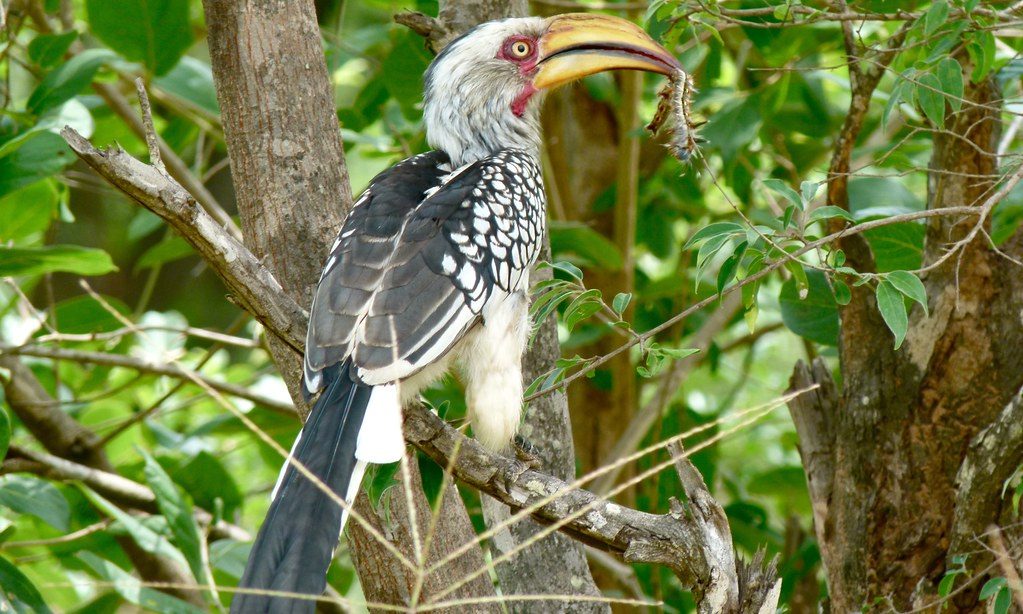
The Southern Yellow-billed Hornbill is an incredible bird often referred to as the “Flying Banana” due to its elongated, yellow, and downward-curved bill. Native to Southern Africa, this bird has a unique appearance that sets it apart from other species. Male birds have a casque above the beak, while both males and females have a bare red skin around and below the eyes, making them easily identifiable.
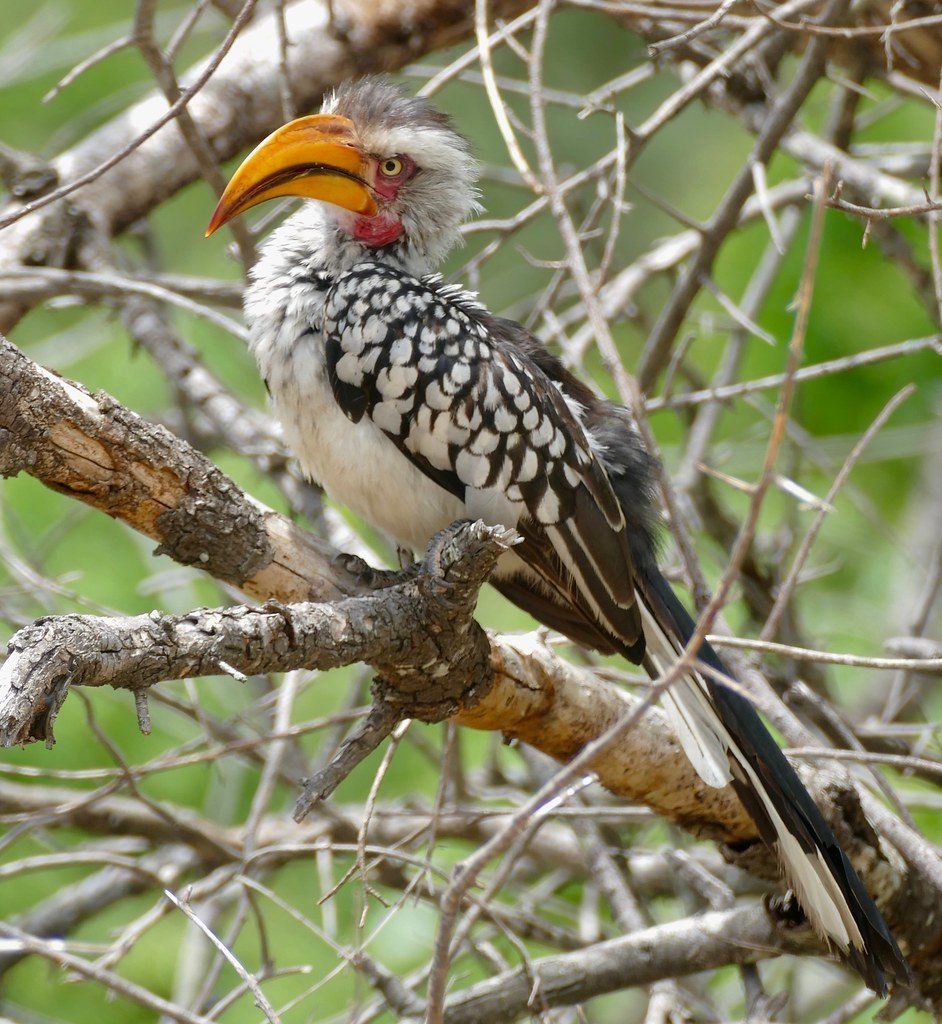
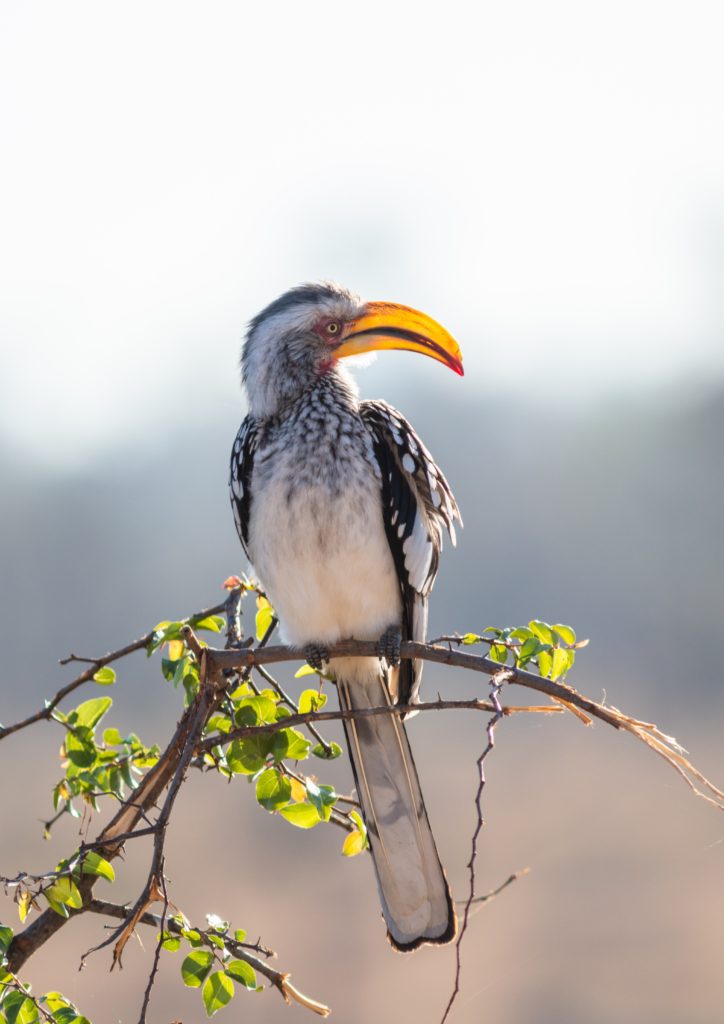
Aside from their distinct features, Yellow-billed Hornbills are also known for their habitats. They prefer to live in dry thorn fields, deciduous woodlands, and scrubs where they can be seen hopping on the ground in a fairly heavy manner. Although they are commonly found in National Kruger Park, they can also be easily spotted along roads and in parks and reserves, where they tend to be quite tame.
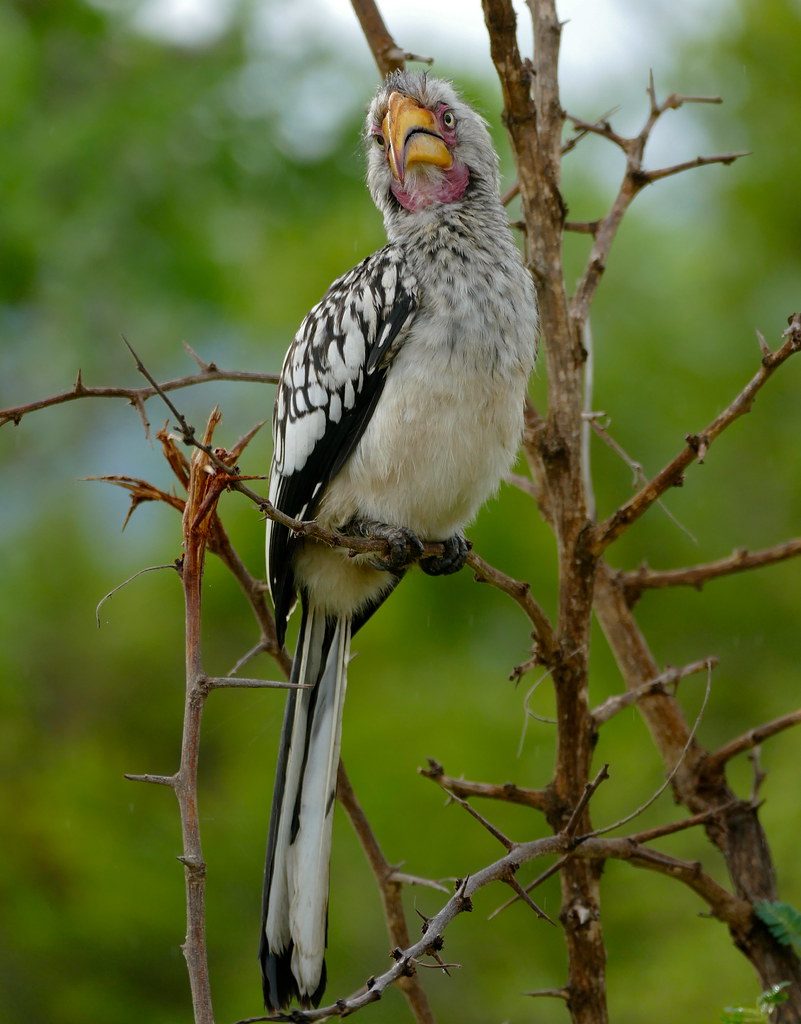
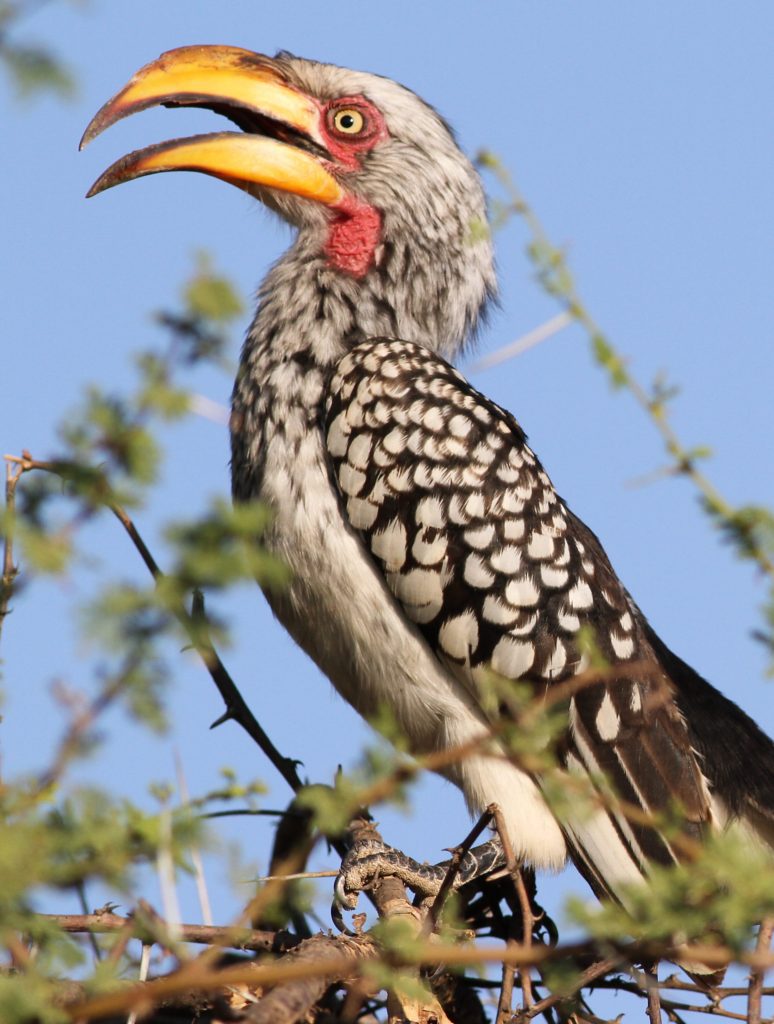

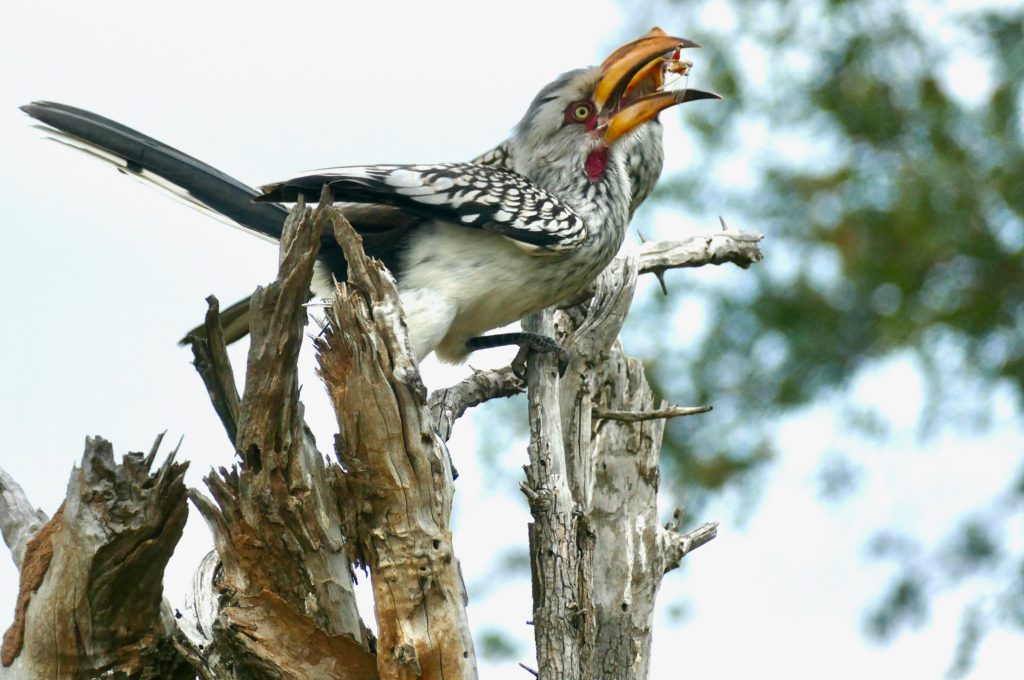
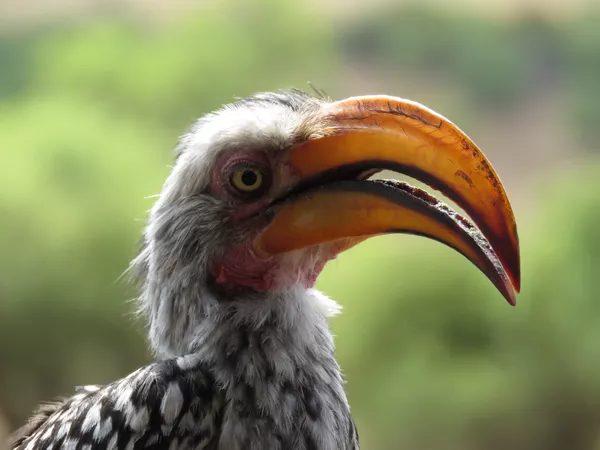
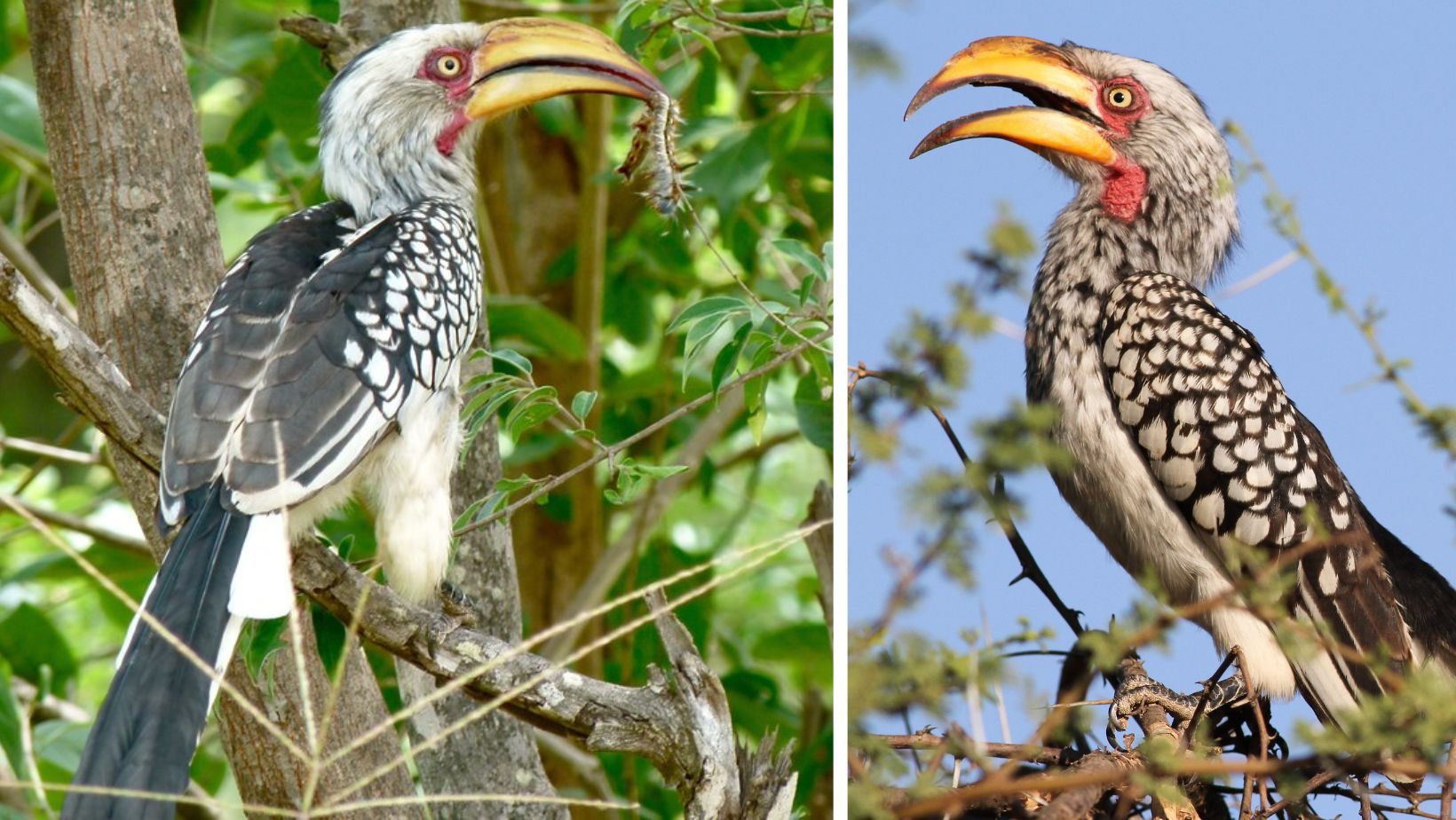
Yellow-billed Hornbills have an omnivorous diet, which includes insects, rodents, fruits, and seeds, as well as snakes, lizards, and scorpions. Interestingly, they build their nests in a hole in a tree, which is then lined with dry grasses and leaves. The nesting process is fascinating, with the female laying three to four white eggs within the cavity and incubating them for around 25 days while being fed by the male. After hatching, the chicks are fed by the female in the hole for three weeks with regurgitated food. The female then leaves the nest, and the young reseal the hole themselves. They stay 40 to 45 days more in the nest, fed by both parents. When they fledge, they perch for a few days in the tree on the nest site, moving their wings before taking off.
Overall, the Southern Yellow-billed Hornbill is a remarkable bird that is fascinating to learn about. With its unique appearance, interesting nesting habits, and omnivorous diet, it is one of the most exciting bird species to observe in Southern Africa. If you are interested in watching and listening to this bird, you can do so by following the link provided below.





